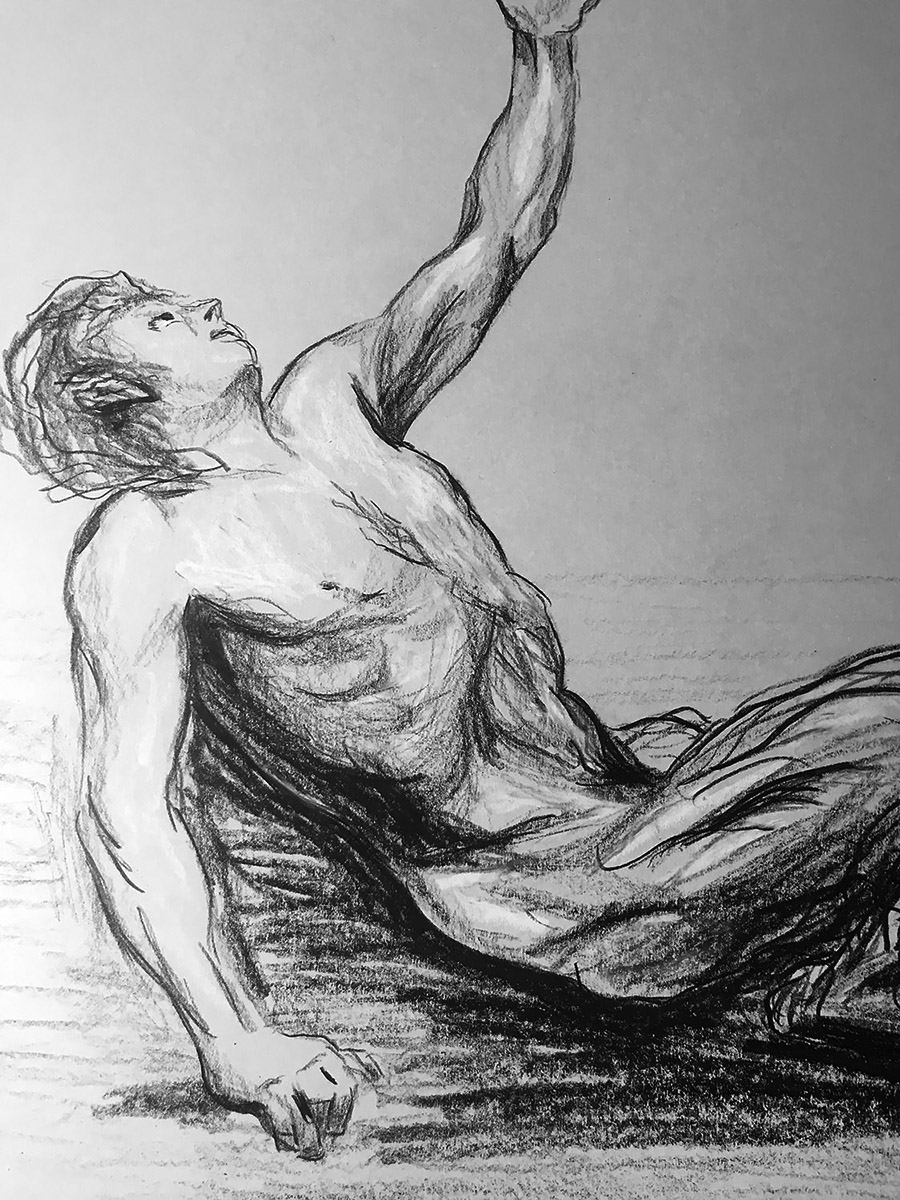
The drawing above was done with black and white Prismacolor® pencils on gray-toned paper. The subject is a Satyr, which is a Greek mythological demigod that is half man and half goat. It was copied from a drawing by Jean-Baptiste Deshays. That work was originally attributed to the more famous French artist, François Boucher. I will write about Boucher later in another blog post unless I find out that the other drawings supposedly done by him were in fact drawn by other artists. Now let’s talk about Jean-Baptiste Deshays or if you want to be even more formal, Jean-Baptiste-Henri Deshays. There is not a whole lot written about Deshays. Even the people that write for Wikipedia did not have much to say about Deshay and they seem incredibly interested in everything. The information they had was taken from the Fine Arts Museums of San Francisco. They also had one external link to the Web Gallery of Art. But unfortunately, that link went to the biography of François-Guillaume Menageot. So let us learn what we can about this talented and relatively unknown French painter.
They seem incredibly interested in everything.
Born on November 27, 1729 in Colleville, France, Jean-Baptiste Deshays first learned how to paint from his father. At the age of 20, he moved into the studio of Jean Restout II, who, like Collin de Vermont, was a student of Jean Jouvenet and followed in the grand tradition of French history painting. During his studies with Restout, Deshays learned the importance of dramatic compositions and intense colors in big religious paintings. While he was in Restout’s studio, Deshays entered the prestigious Prix de Rome competition, winning second prize in 1750 and then the first prize in 1751. Deshays was required to spend three years at the Ecole des Eleves Protégés before proceeding to Rome. The school director, Carle Van Loo helped him develop a more stylish, looser style and tone down the intense training he received from Jouvenet. During this time, he painted a number of religious paintings, which are now lost, including two large canvases, an Annunciation and a Visitation, for the Rouen monastery of the Visitation. In Rome, under the supervision of Charles-Joseph Natoire, he spent four years completing his artistic instruction. Raphael, Domenichino, Guercino, and Carracci were among the Italian masters he copied during this period. His return to Paris in 1758 was followed by his marriage to François Boucher’s eldest daughter and his membership into the Royal Academy of Painting and Sculpture. Despite only exhibiting at four official Salons, the artist was highly praised for his work.
Here is a link to Jean-Baptiste Deshays’ “Seated Satyr Leaning Backward” 1758/1765.
